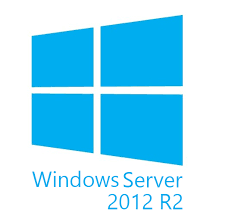Disk performance change in Exchange 2010 (IOPS)
Yes there is big architecture change in Exchange 2010, Exchange server 2010 able to provide 70% more performance compare to Exchange 2007, I will explain this in detail in this article.
In a simple way each Exchange mailbox server has to communicate to storage disk in order to make the changes, changes happen when ever user send and receive mails, if user send and receive more mails then Exchange mailbox server have to communicate frequently to the storage disk, it will lead to an performance issue, to avoid this you should have better performance disk (expensive disk) this disk can perform more IOPS
What is IOPS?
IO operations per second (IOPS) it’s used to measure the disk performance, high performing disks which can perform more IO operations per second (IOPS) compare to normal inexpensive disk.
How this can improve the Exchange 2010 performance?
Microsoft Exchange Server 2007 users require 0.3 IOPS of disk performance, For Exchange Server 2010, the IOPS per user is now 0.1—70 percent less than Exchange 2007. This results in better Exchange performance for users.
Exchange 2010 IOPS per user is now 0.1, you can use this advantage from Exchange 2010 to design better performance and less expensive messaging environment
How you can design Exchange 2010 with respective to IOPS
Now you know the IOPS per user for Exchange server 2010, you have to check your disk IOPS configuration, accordingly you have to design how many users per disk and disk space limit for each users.
Compare to Exchange 2007, Exchange 2010 accommodate more user per disk and provide better performance, let’s say your disk IOPS is 100 then you can have 1000 user per disk, in Exchange 2007 with the same disk configuration you can only have 333 users so you can also use low cost disk with less IOPS value, because now we have less expensive but larger disks available in market with low IOPS, like 1TB with 50 IOPS cost is lesser then 146GB with 150 IOPS
In Exchange server 2010
1TB with 50 IOPS = 500 user per Disk and 2GB per user
146GB with 150 IOPS = 1500 user per Disk and 100MB per user
In Exchange server 2007
1TB with 50 IOPS = 166 user per Disk and 6GB per user
146GB with 150 IOPS = 500 user per Disk and 300MB per user
Is this low cost Disk able to provide high availability?
Am sure every one have this question in your mind by reading this, because basically inexpensive disks are less reliable compare to expensive disk, so how Exchange 2010 mange to provide the high availability
And also if the per user mailbox size increased how we are going to handle the backup and restore solution since the backup date size is large
To answer this question, yes Exchange server 2010 address this issue using the new feature called DAG (Database Availability Group) using this feature you can easily provide high availability, disaster recovery, and backup solution for messaging environment and no need for RAID and cluster and backup, I will explain this in detail in my next article.
Now if any one asks why we require to migrate Exchange 2000/2003/2007 to 2010, you have the answer, apart from this feature, Exchange 2010 has many other features, I will try to list Exchange 2010 fractures in my up coming post.
Related Articles
High capacity and low cost disks for Exhcnage 2010 server
Schema version for Exchange 2010
Schema Version for Windows 2008 R2



